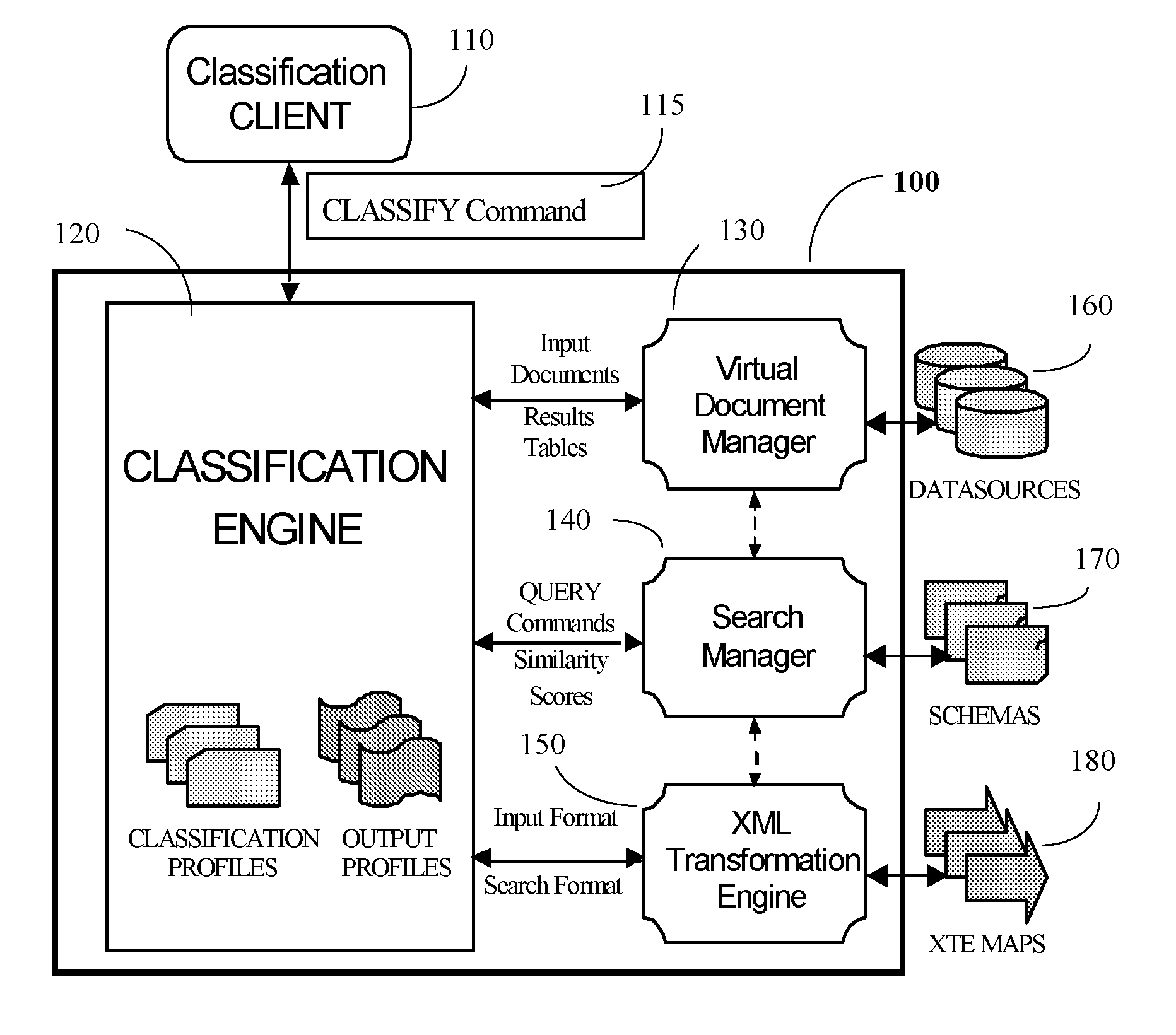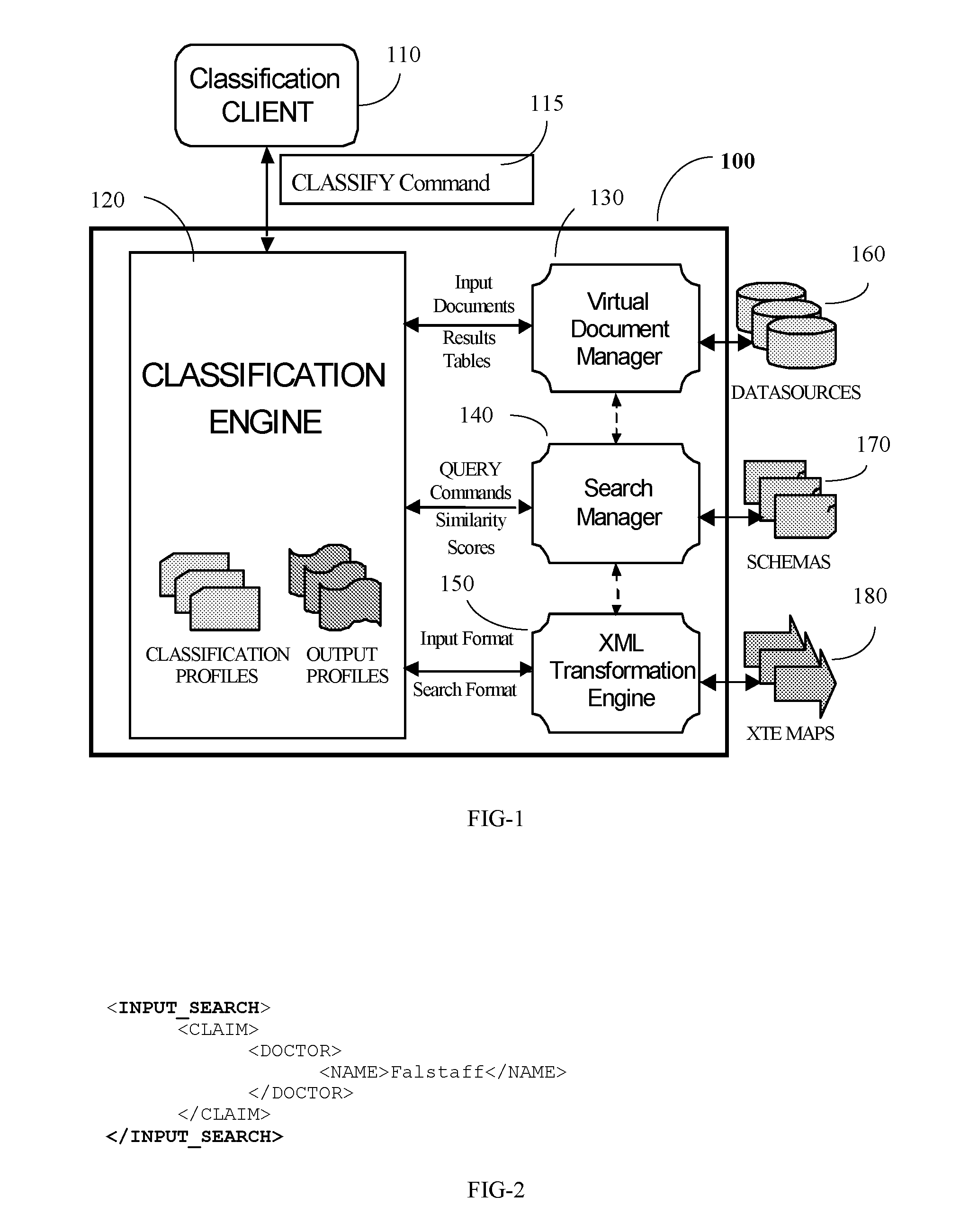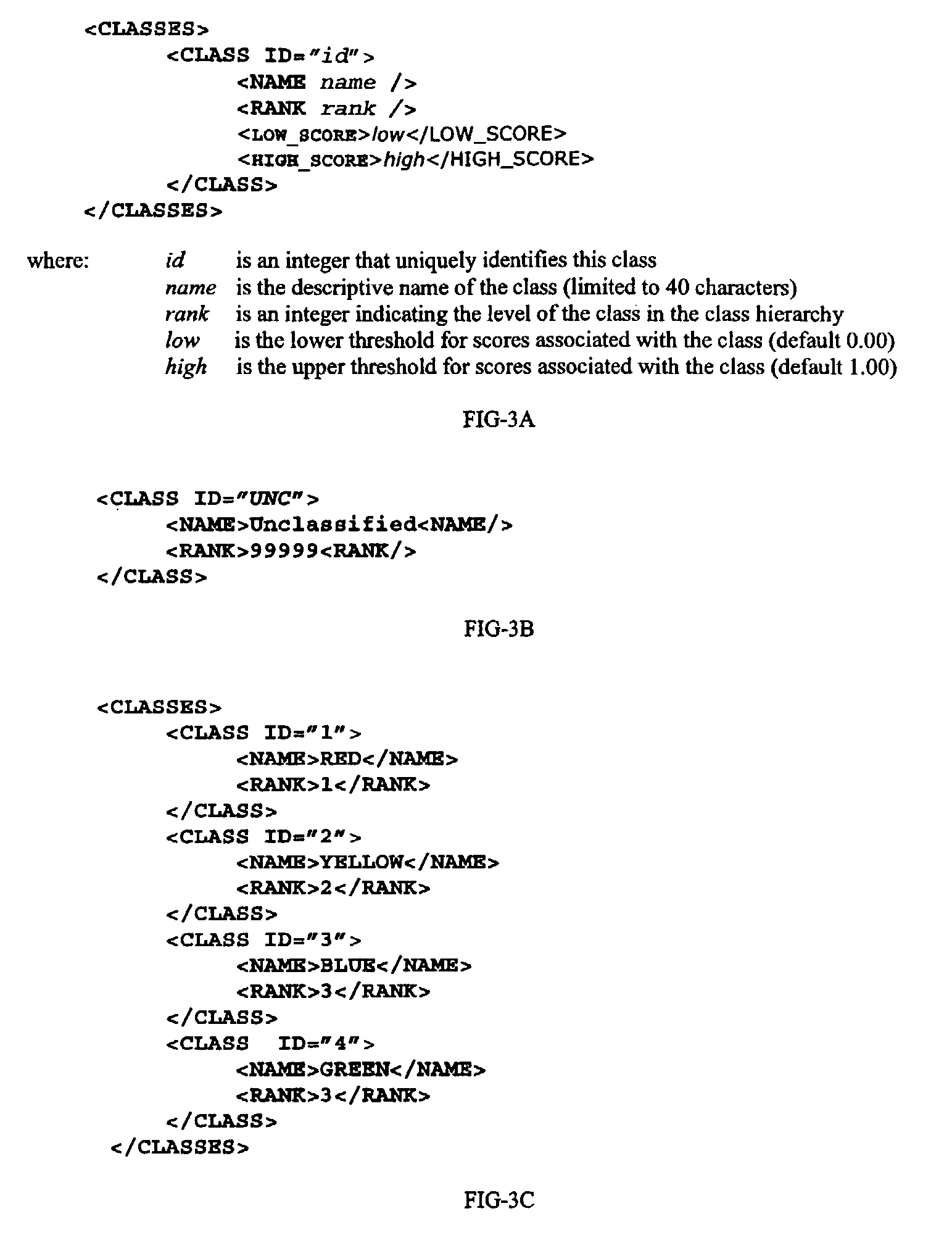System and method for classification of documents
a document classification and document technology, applied in the field of document classification, can solve the problems of insufficient inability to meet the content-based retrieval requirements of many users, and inability to generate and maintain models, etc., and achieve the effect of simple definition and maintenan
- Summary
- Abstract
- Description
- Claims
- Application Information
AI Technical Summary
Benefits of technology
Problems solved by technology
Method used
Image
Examples
Embodiment Construction
[0040]Turning to FIG. 1, the Classification Engine (CE) 120 operates within the framework of the Similarity Search Engine (SSE) 100, employing the services of the SSE's Virtual Document Manager (VDM) 130, Search Manager (SM) 140, and XML Transformation Engine (XTE) 150. The VDM 130 is used by the CE 120 to access the documents to be classified, and by the SM 140 to access the databases 160 the CE 120 needs to search. The SM 140 performs similarity searches requested by the CE 120 and returns the results indicating the degree of similarity between the input values drawn from the input documents and the target values found in the search databases. The XTE 150 enables the CE 120 to move data from one hierarchical form to another, which is necessary for searching across disparate databases.
[0041]The CE 120 is a general-purpose classification server designed to support a range of client applications. A typical interactive client 110 might employ the CE 120 to classify incoming documents ...
PUM
 Login to View More
Login to View More Abstract
Description
Claims
Application Information
 Login to View More
Login to View More - R&D
- Intellectual Property
- Life Sciences
- Materials
- Tech Scout
- Unparalleled Data Quality
- Higher Quality Content
- 60% Fewer Hallucinations
Browse by: Latest US Patents, China's latest patents, Technical Efficacy Thesaurus, Application Domain, Technology Topic, Popular Technical Reports.
© 2025 PatSnap. All rights reserved.Legal|Privacy policy|Modern Slavery Act Transparency Statement|Sitemap|About US| Contact US: help@patsnap.com



